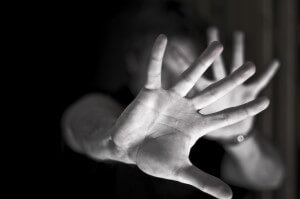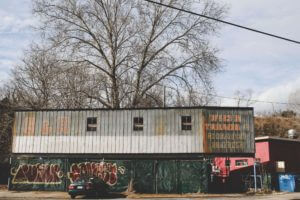Crime shows on television seem to focus only on homicide. After they find the evidence, they prove he killed her, and, bingo, they convict the man of killing his wife. However, in reality, murder charges require more substance to lead to a conviction. Murder constitutes one of the most serious crimes in the United States. In order to convict someone of murder, the prosecution must prove, beyond reasonable doubt, that the individual acted with “malice aforethought.” Malice aforethought describes the individual’s intent and mental state while committing the crime.
Malice aforethought differs from terms like malicious, deliberate, or premeditated. “Malicious” means ill will. “Deliberate” is defined as thoughtfully weighing options. “Premeditated” refers to contemplating an action beforehand, and then proceeding with it.
California Penal Code 187 states that murder involves one person taking another human’s life with malice aforethought. The law further defines malice aforethought as a deliberate intent to kill, or a reckless disregard for human life.
California Penal Code 188 elaborates on malice aforethought as follows:
Such malice may be “express” or “implied.” It is “express” when there is manifest a deliberate intention to take the life of a fellow creature unlawfully. It is “implied” when there is no apparent provocation, or when the circumstances attending the killing show an abandoned and malignant heart.
When it is shown that the killing resulted from an intentional act executed with express or implied malice as defined above, no other mental state need be shown
Malice aforethought concerns the defendant’s mental state, and more specifically, his or her intent. Express malice aforethought is defined as the deliberate killing of another person, while implied malice aforethought describes a situation in which the defendant killed someone while consciously disregarding the risk for human life. Moreover, implied malice aforethought does not imply a deliberate intent to kill.
Examples of express malice would include the following:
- Choking someone until the victim loses consciousness and stops breathing
- Shooting firearms at point-blank range at another person
- Employing a hit man to take another person’s life
- Deliberately poisoning another person
Examples of implied malice would include:
- Allowing young children to handle loaded firearms without supervision
- Driving under the influence after receiving warnings from the court concerning the dangers of drinking while driving, or after prior prosecution for DUI
- Allowing dogs that have attacked and injured people in the past to run free in a park
- Throwing bricks at cars from a freeway overpass
People accused of murder have an obligation to themselves to fight for their freedom and civil liberties. Finding experienced defense attorneys can help obtain the best outcome. A good lawyer will be able to investigate the situation and uncover information vital to the murder case. Since 1989, over 2,100 people convicted of murder have been exonerated through the dedication of relentless legal counsel. The job of defense attorneys is to stand up for individual rights against an immensely powerful government entity.
Defining Malice Aforethought in Murder
California state prosecutors rely on malice aforethought to prove the deadly intent of the accused while committing a homicide. The prosecution cannot convict a person of murder unless malice aforethought can be proven.
Malice aforethought falls into two categories, express or implied. “Express” refers to a deliberate intent to take human life. “Implied” refers to willfully acting with a conscious disregard for human life.
California Juror Instructions explain malice aforethought as follows:
There are two kinds of malice aforethought, express malice and implied malice. Proof of either is sufficient to establish the state of mind required for murder.
The defendant acted with express malice if he or she unlawfully intended to kill.
The defendant acted with implied malice if:
- He or she intentionally committed an act;
- The natural and probable consequences of the act were dangerous to human life;
- He or she knew this act was dangerous to human life at the time he or she acted
- AND
- He or she deliberately acted with a conscious disregard for human or fetal life.
Malice aforethought does not require hatred or ill will toward the victim. It refers to the mental state of the perpetrator that must be established before the act that causes death is committed. The concept does not require deliberation or the passage of any particular period of time.
It is not necessary for the defendant be aware of the existence of a fetus in order to be guilty of murdering the fetus.
Malice aforethought is considered an integral element of murder charges.
Malice Aforethought and Murder in California
In order to convict someone of a crime, the prosecution must prove, beyond reasonable doubt, certain elements of the crime. California State Juror Instructions 520, Murder in the First and Second Degree, define the necessary elements as follows:
- The defendant committed an act that caused the death of another person, or a fetus
AND
- When the defendant acted, (he or she) had a state of mind defined as malice aforethought,
AND
- He or she killed without lawful excuse or justification.
In order to prosecute someone of a crime, most cases require the prosecution to prove that the person committed the act, and that the person had a specific mental state conducive to criminal behavior. Murder convictions require only that it be proven that the accused unlawfully took another person’s life, and that he or she exhibited malice aforethought.
Malice aforethought does not imply a motive; it only describes the mental state of an individual during the deliberate and unlawful commission of homicide.
Example
San Francisco prosecutors have convicted Toby of theft and assault on multiple occasions, and Toby’s criminal record reflects this. He frequents a specific bar on Thursday nights. One Thursday, he joins a group of friends and acquaintances for a celebration of sorts. Although there is no fight or argument,Toby nonetheless brandishes a pistol and shoots one of the other bar patrons.
Since no one at the bar says anything to the police, the prosecution can only rely on the video evidence from the bar’s surveillance system. The footage clearly shows Toby deliberately shooting the other man without any evidence of self defense.
Toby killed the other bar patron, and did so with an understanding of the consequences of his actions. The prosecution could very well pursue murder charges against Toby for his actions.
Express Malice
Of the two forms of malice aforethought, express malice uses a simpler and more direct standard. Express malice refers to behavior clearly carried out in order to take someone’s life.
California Penal Code 188 defines express malice as an instance when the perpetrators “manifest a deliberate intention to unlawfully take away the life of a fellow creature.”
Example
A disgruntled employee takes an assault rifle to work, and begins to shoot into the main lobby. The employee deliberately intends to kill those he worked with. He has no lawful reason to do so, and is acting with express malice in this instance.
Implied Malice
Implied malice occurs when an individual deliberately acts in a way that causes great risk to human life, and displays a conscious disregard for this risk. Implied malice occurs indirectly or through reference. The perpetrator does not need to intend to kill, but needs to fully understand that his or her actions will result in another person’s death.
California Penal Code 188 defines implied malice as “when no considerable provocation appears, or when the circumstances attending the killing show an abandoned and malignant heart.”
Example
A parent leaves a loaded revolver on the coffee table in the living room. Her child tries to spin the cylinder and ends up shooting and killing herself. The parent understood the dangers associated with firearms, but left the gun out anyway. The parent showed a deliberate disregard for the child’s safety by leaving the gun out while loaded, and could be prosecuted for murder under implied malice.
Malicious Crime
The California legislature defines “malice” differently from “malicious.” While the terms share roots in colloquial language, the criminal laws differentiate between the two terms.
Penal Code 7, Subsection 4 defines the two terms as follows:
The words “malice” or “maliciously” suggest a wish to vex, annoy, or injure another person, or an intent to do a wrongful act.
The terms in Penal Code 7, Subsection 4, refer to malicious criminal acts, such as the crime of mayhem.
Legally, other crimes require ill will or evil intent by the perpetrator. However, the mental requirement in Penal Code 188 does not require ill will. Even if an individual believes that his or her actions benefit someone else, the prosecution can still successfully charge him or her with murder.
In the 1975 case of The People v Harris, the California Supreme Court ruled that:
“The malice essential to constitute [murder] is something distinct from [Penal Code 7].”
Example
Bob and Phyllis married each other 40 years ago. Bob began to develop Chronic myelomonocytic leukemia, an extremely painful terminal cancer of the bones. After a few weeks in the hospital, the doctors acknowledged that there was nothing more they could do for him. The doctors sent him home. After returning from the hospital, Bob had a hospice nurse who cared for him during the day. He suffered daily, and Phyllis could not stand to see him suffering. One night, after the nurse went home, Phyllis gave Bob a fatal dose of morphine. After an hour or so, Bob passed away.
Although Phyllis acted with the best of intentions, she still deliberately killed her husband.
Deliberation and Premeditation
The California state legislature asserts that deliberation and premeditation differ from the mental state of malice aforethought. All murder charges require malice aforethought, but murder charges do not require premeditation or deliberation.
Premeditation and deliberation describe scenarios in which the defendant reflected on and planned the commission of the homicide, with an understanding of the consequences.
Deliberation and premeditation raise the severity of murder charges in California to first-degree murder. California Penal Code 189 states that first-degree murder includes “killing in a way that is willful, deliberate and premeditated.”
The State of California classifies first-degree murder as the highest-level felony in the state. California considers those who reflect on and commit a homicide as deserving of more severe penalties.
Willful, deliberate, and premeditated murder constitutes one of three types of first-degree murder. California State Penal Code 189 defines the others as:
- Using a destructive devise in California, lying in wait, or using torture in California
- California’s felony murder rule, or Watson Murder, for certain DUI-related homicides
Example
Jan possesses a frightening temper. One day she decides to bring a pistol to work with her. After starting an argument with a coworker, she brandishes the pistol and threatens to kill the coworker. Jan then briefly calms down and lowers the weapon. However, she slips as she starts to place the pistol back in her purse, and a single shot goes straight into the heart of her coworker.
Jan displayed the “express” malice element of murder. Her actions illustrated an intent to take human life. Furthermore, she had reflected on the act beforehand. She had ample time to contemplate how bringing a pistol to work could affect her life, and the lives of her coworkers. However, she proceeded to act in a way that killed her coworker.
Understanding Malice Aforethought in Murder
California only considers homicides as murder if the perpetrator acted with malice aforethought. Murder laws use malice aforethought to describe the killer’s mental state while committing the homicide.
Malice aforethought can take two forms, express malice and implied malice.
Express malice aforethought refers to situations in which the killer deliberately acts in a way to kill another person.
Implied malice aforethought refers to situations in which the killer understands that his or her actions carry an inherent risk to human life, but carries out the risky actions anyway.
Express malice aforethought occurs in cases in which an individual shoots someone at point-blank range, or stabs someone to death.
Implied malice aforethought occurs in situations in which someone rolls a boulder down a hill towards a group of people, or when someone leaves a loaded gun out where a child can reach it.
Malice aforethought is an integral element of murder charges, and determines the severity of the homicide. While the concept may seem rather black and white, the prosecution and the defense must explore it in detail to ensure justice. People accused of murder, or of any homicide-related crime, face the most severe penalties that the State of California can impose. Only through diligent research and investigation can the accused hope to find a positive outcome. Without an experienced defense attorney, the chances of success are drastically reduced.











